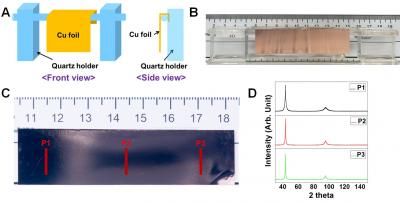When liquid crystals with a metal center are "shaking hands"
Advertisement
Without liquid crystals (LC's) our cell phones and notebook computers would not be possible, for these compounds keep our display screens flat and lightweight. Being a phase of matter whose order is intermediate between that of a liquid and that of a three-dimensionally organized crystal, LC's show special properties. For instance, by applying electric fields the molecular orientation and hence the optical properties of LC's can be controlled. In addition to the variety of interesting properties that LC's already display, chemists at the Jena University and the University of Colorado at Boulder have added new ones. First of all, they used LC's containing a metal center of palladium or nickel. The rod-shaped organic LC moieties thus have a potentially active metal center, enableing them to do additional things such as perform catalytic reactions. Furthermore, special groups were added to the ends of molecules which are able to interact if exposed to high temperatures. The new LC's therefore form cross-linked network polymers in which their usual order is "frozen".
By combining their competencies, the scientists from Boulder and Jena have been able to design and synthezise the first samples of a new kind of metal-containing LC-polymer, which shows characteristics of LC's, polymers, and catalytically active compounds at once. "With these new metal-containing LC compounds new materials can be synthesized", says Prof. Dr. Wolfgang Weigand.
Original Publication: Advanced Materials 2005, 17, 602.
Most read news
Other news from the department science

Get the chemical industry in your inbox
By submitting this form you agree that LUMITOS AG will send you the newsletter(s) selected above by email. Your data will not be passed on to third parties. Your data will be stored and processed in accordance with our data protection regulations. LUMITOS may contact you by email for the purpose of advertising or market and opinion surveys. You can revoke your consent at any time without giving reasons to LUMITOS AG, Ernst-Augustin-Str. 2, 12489 Berlin, Germany or by e-mail at revoke@lumitos.com with effect for the future. In addition, each email contains a link to unsubscribe from the corresponding newsletter.































































